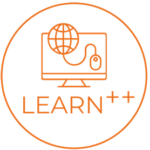Role of Teachers, Students in BL Environment & BL Models
Blended learning (BL) is a teaching approach that combines online learning with traditional classroom instruction. In this environment, the role of the teacher is critical in ensuring the success of the students. Teachers must be proficient in the use of technology and be able to integrate it seamlessly into the classroom environment. Here are some key roles of teachers in a BL environment:
- Planning: Teachers must design effective lesson plans that take into account the different needs of students. This includes selecting appropriate online resources and creating activities that engage students in active learning.
- Facilitating: Teachers act as facilitators in a BL environment, guiding students through the learning process and providing support and feedback as needed.
- Assessing: Teachers must develop effective assessment strategies that measure student progress in both online and offline activities.
- Managing: Teachers must manage the classroom effectively, ensuring that students are on task and engaged in their learning activities. They must also provide support to students who are struggling with the technology or the content.
- Personalizing: Teachers must personalize learning experiences to meet the diverse needs of the students in the classroom. This includes providing individualized support and feedback and adapting lessons to meet the learning styles of different students.
The Role of Learners in a BL Environment:
In a BL environment, learners are responsible for their own learning and must take an active role in the process. Here are some key roles of learners in a BL environment:
- Self-direction: Learners must take responsibility for their own learning, set goals and manage their time effectively.
- Engagement: Learners must be engaged in the learning process, participating in online discussions, completing activities, and asking questions.
- Collaboration: Learners must collaborate with their peers and teachers, sharing ideas, and providing feedback to others.
- Feedback: Learners must be willing to receive feedback and use it to improve their learning.
- Technology: Learners must be proficient in the use of technology, including online resources, productivity tools, and communication platforms.
BL Structures in Education:
Blended learning has become increasingly popular over the years, and there are many different ways that it can be structured in education. Here are some common BL structures:
- Flipped Classroom Model: In this model, students watch lectures or complete online activities at home and then attend in-person sessions to apply what they have learned, ask questions, and work on projects.
- Rotation Model: This model involves students rotating between online and offline activities. For example, a group of students may work on an online module while another group works with the teacher, and then the groups switch.
- Flex Model: In this model, students have control over their learning and can move at their own pace. They may attend in-person sessions with a teacher or work on online activities independently.
- A La Carte Model: In this model, students take online courses to supplement their traditional in-person classes. This is often used for students who need to catch up on credits or take advanced courses not offered at their school.
- Enriched Virtual Model: This model combines online and in-person learning. Students complete most of their coursework online but also attend in-person sessions for discussions, group work, and hands-on activities.
Scenarios in BL:
Blended learning is a flexible approach to education that combines traditional face-to-face instruction with online learning activities. The choice of blended learning method to be used depends on several factors, including the nature of the course, the expected learning outcomes, the class strength, and the available technology resources. Here are some examples of how different blended learning methods can be applied in various scenarios:
- Flipped classroom: The flipped classroom model is suitable for courses that require students to engage in hands-on or collaborative activities. In a flipped classroom, students learn new concepts online through videos, articles, or other resources before coming to class. During class time, students work on practical exercises, problem-solving activities, and discussions with their peers. This model works well for smaller class sizes where there is a need for student-centred learning.
- Station rotation: Station rotation is a flexible model that can be used in courses that require a range of learning activities, including independent study, group work, and teacher-led instruction. In this model, students rotate between different stations, each with a specific learning activity. For example, one station could be for independent study using online resources, while another could be for group work with teacher support. This model works well for larger class sizes where individualized learning is required.
- Flex model: The flex model is a personalized learning approach that is ideal for courses that require students to work at their own pace. In this model, students complete online learning activities and assessments independently, with teachers providing support and guidance as needed. The flex model works well for courses with a wide range of ability levels and for students who need flexibility in scheduling.
- Online lab model: The online lab model is suitable for courses that require access to specialized equipment or facilities. In this model, students complete theoretical coursework online, while attending face-to-face lab sessions to gain hands-on experience. This model works well for courses in science, engineering, and other technical fields.
- Enriched virtual model: The enriched virtual model is a blended learning approach that combines face-to-face instruction with online learning. In this model, students attend traditional classes for a portion of the week and complete online learning activities for the rest of the week. The enriched virtual model works well for courses where students need a combination of teacher-led instruction and independent learning.
In conclusion, choosing the right blended learning model depends on several factors, including the nature of the course, the learning outcomes, the strength of the class, and the available resources. A well-designed blended learning approach can enhance student engagement, improve learning outcomes, and provide students with a more flexible and personalized learning experience.

